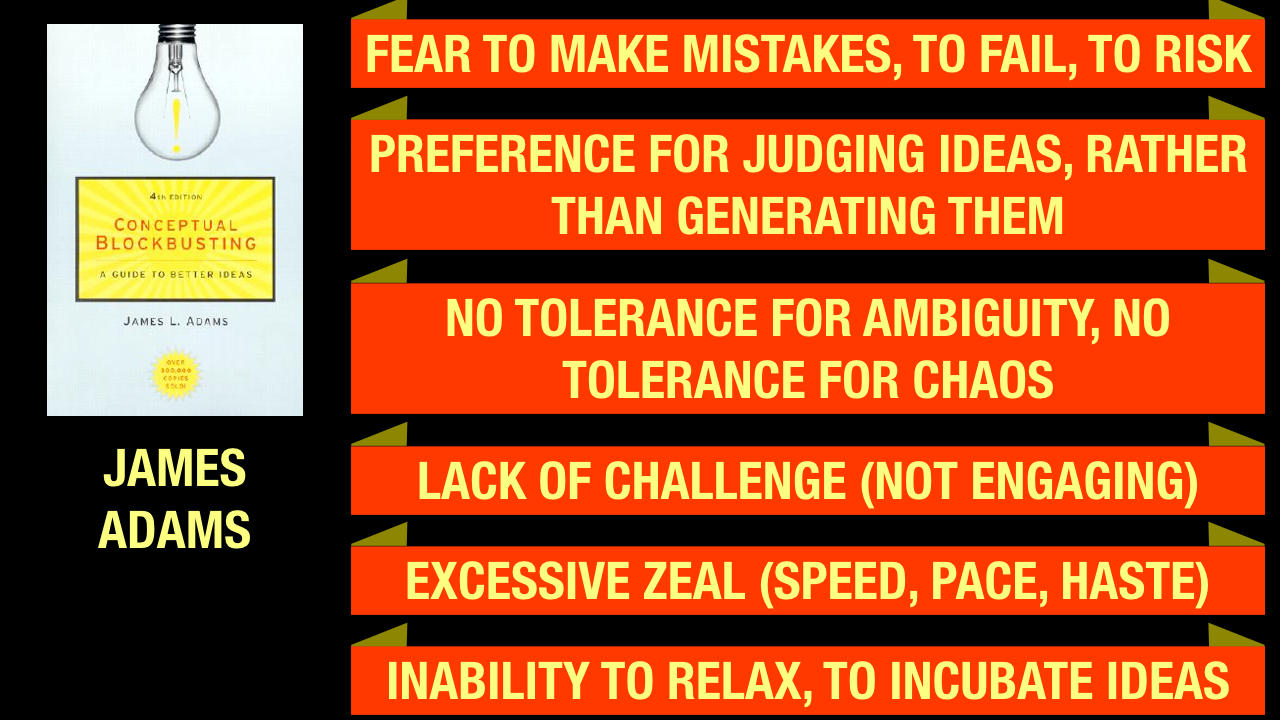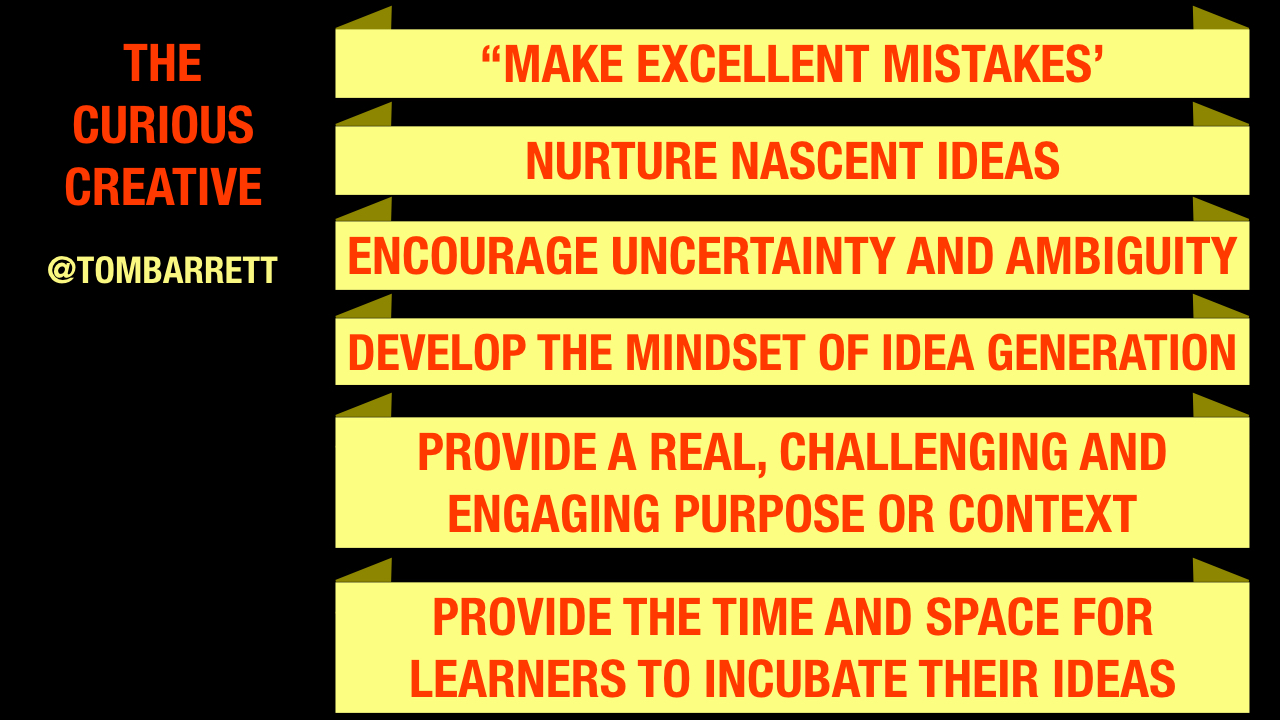So it would seem that I have stumbled on to a little running theme in the last few blog posts about coming up with ideas. No reason to kick that habit just yet as it is one of the most intriguing of subjects. In this post I want to share some of the emotional barriers to idea generation.
In one of my favourite books: Conceptual Blockbusting, James Adams[1] outlines a range of these emotional blocks to the creative process. Behaviours and habits that can stultify our efforts.
- A fear to make mistakes, to fail, to risk.
- Preference for judging ideas rather than generating them.
- No tolerance for ambiguity or chaos.
- A lack of challenge – not engaging enough.
- Excessive zeal – too much speed, pace and haste.[2]
- An inability to relax and to incubate ideas.
Which ones do you recognise in your colleagues or students, or even sometimes in your own behaviour?

Most of these are of course directly linked. For example when you have a low tolerance for any sort of uncertainty you are risk averse and have a heightened fear of making mistakes. If there is too much pace, either by design or by accident, then you are less likely to relax and incubate ideas. None of these descriptions are ideal for the idea generation process. None of these are ideal for creative learning.
Let’s flip them around so that they become positive descriptions of a learning environment and see how they sound.
- “Make excellent mistakes.”[3]
- Nurture nascent ideas.
- Encourage uncertainty and ambiguity.
- Develop the mindset needed for idea generation.
- Provide a real, challenging and engaging purpose or context.
- Provide the time and space for learners to incubate their ideas.[4]:

They sound like some useful guidelines to stick to. Again they have the same causal links as before. The mindset of idea generation is divergent = increasing ambiguity = the chance to make a better type of mistake. Slow the pace down = increased opportunity to ponder and cogitate a little. You get the idea.
A big take away here is that much of this is bound by the explicit development of the mindset that is needed at this part of the process. This shouldn’t be something that is secret or assumed. Learning about and enacting the most appropriate mindset is crucial for successful idea generation. Divergent thinking all the way.[5]
Another interesting element is the importance of challenge. Adams refers to a lack of engagement that is caused by this, but it does not simply mean it is not hard enough. Challenge comes in different guises and a lack of engagement can also be caused by pseudo problems or fake scenarios that are meaningless to students. If it is not engaging enough idea generation will stall. Seek out real contexts to engage your students so that ideation is purposeful.
Let me know what you make of some of these barriers and our look at the positive side of the concepts too. It would be great to hear from you, learn about what resonates with you and what you recognise in your own practice or experience.
-
Adams, James L., Conceptual Blockbusting, W.W.Norton & Company.13, (1976) ↩
-
“No! Unfortunate that you rushed to face him… that incomplete was your training.” ↩
-
Thanks to Daniel Pink for this useful imperative. ↩
-
I will spend some time in the future writing about the pace of the ideation process, in fact all of the creative process. ↩
-
You can read more about divergent thinking and the different thinking states, in my blog post: The Ebb and Flow between Divergent and Convergent Thinking. ↩
The post 6 Emotional Barriers to Generating Ideas and How to Overcome Them appeared first on The Curious Creative.
from The Curious Creative
http://edte.ch/blog/2016/01/05/6-emotional-barriers-to-generating-ideas-and-how-to-overcome-them/
No comments:
Post a Comment